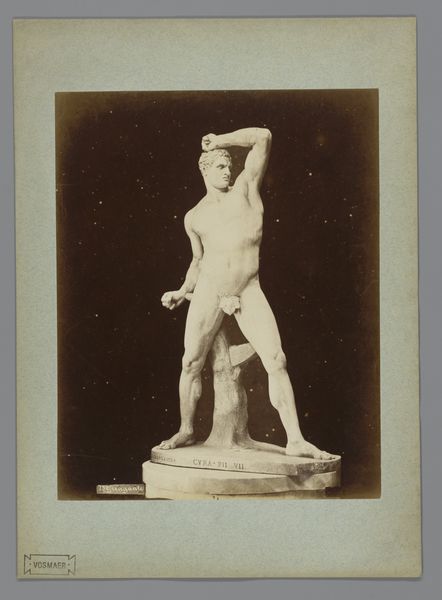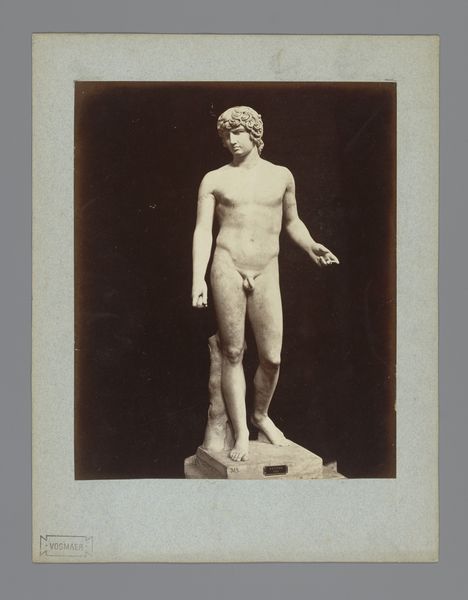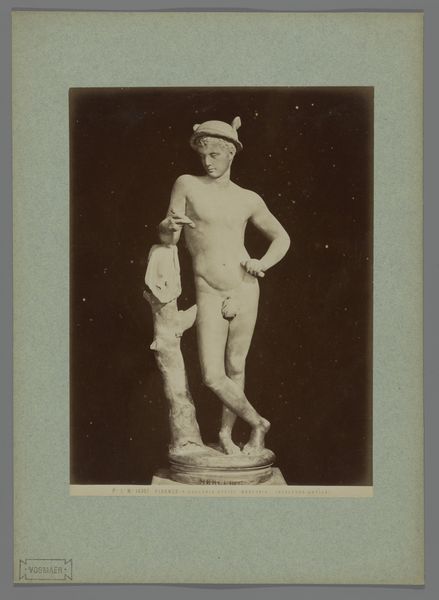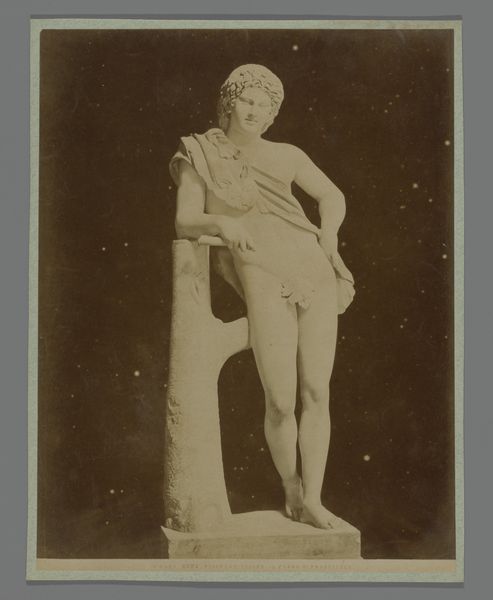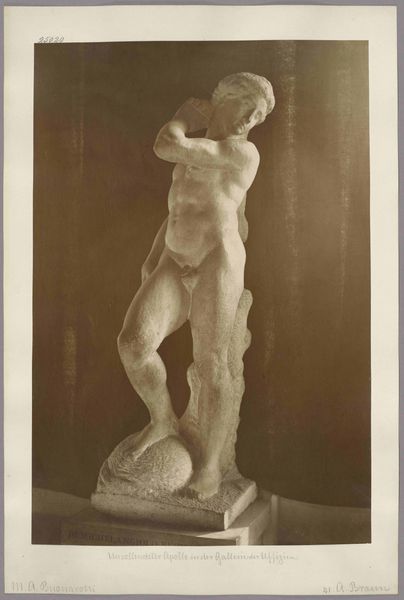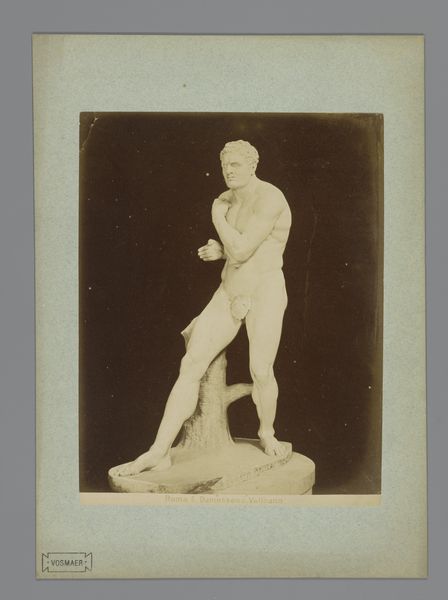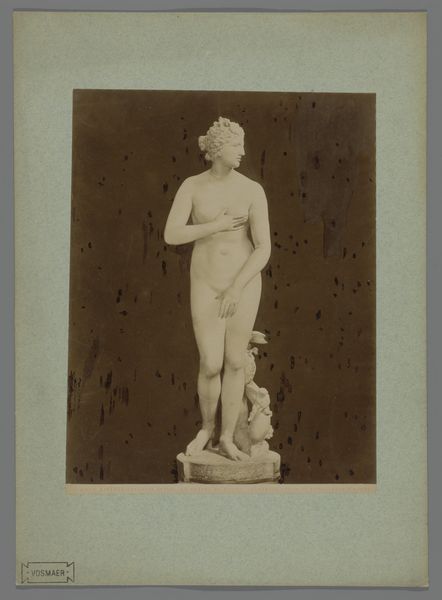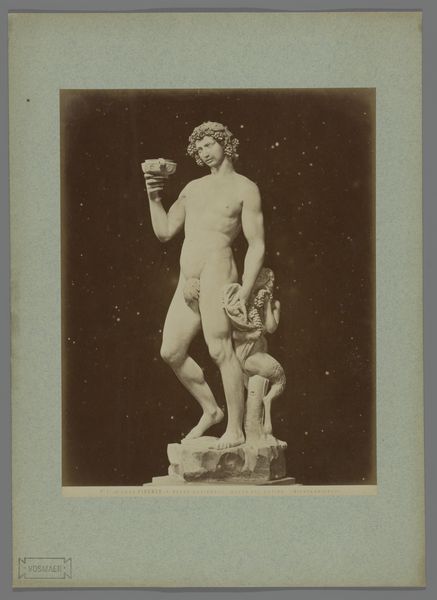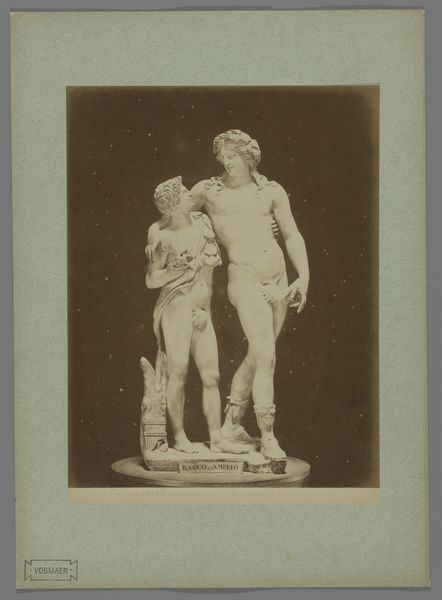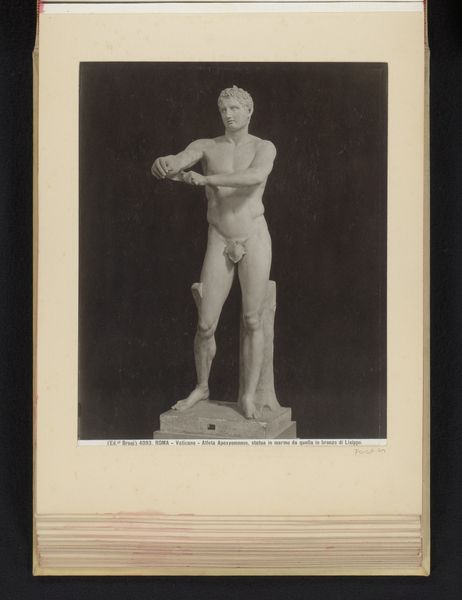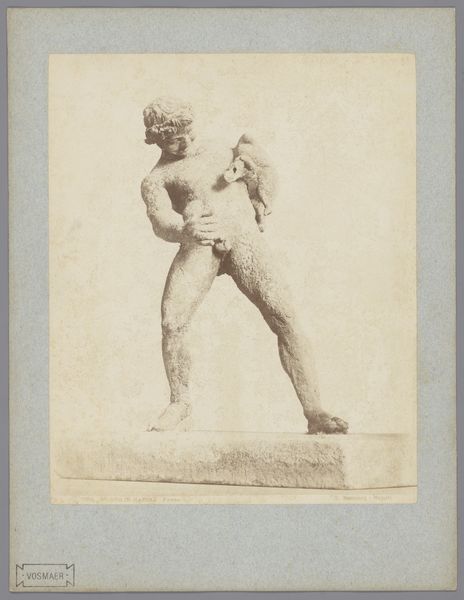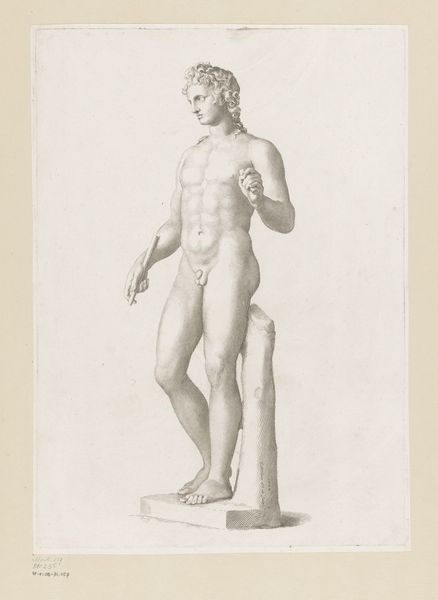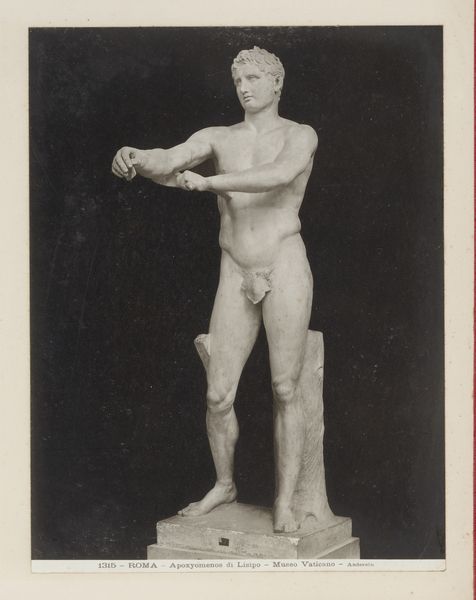
Sculptuur van Hermes van Belvedere in de Vaticaanse Musea, Italië 1852 - 1900
0:00
0:00
fratellialinari
Rijksmuseum
photography, sculpture, gelatin-silver-print
#
portrait
#
greek-and-roman-art
#
classical-realism
#
photography
#
sculpture
#
gelatin-silver-print
#
academic-art
Dimensions: height 249 mm, width 192 mm, height 355 mm, width 256 mm
Copyright: Rijks Museum: Open Domain
Editor: This is a photograph by Fratelli Alinari, sometime between 1852 and 1900. It’s titled "Sculptuur van Hermes van Belvedere in de Vaticaanse Musea, Italië"—which, in English, would be "Sculpture of Hermes of the Belvedere in the Vatican Museums, Italy." It appears to be a gelatin silver print of a classical sculpture, showcasing its elegant form, even with the missing arm. It strikes me how, despite being a photograph of a sculpture, it has a painterly quality. What do you see in this piece from a historical perspective? Curator: The photograph is itself a fascinating object. The Alinari brothers were incredibly influential in disseminating images of art and architecture, shaping the visual culture of the late 19th century. Their work contributed significantly to the Grand Tour experience, enabling those who couldn't travel to Italy to still "see" its masterpieces. Notice how the photographic print is itself framed. It's an interesting visual rhetoric. It makes me wonder what purpose this photo originally served. Was it destined for an art history publication? A personal collection? A souvenir of a sort? Editor: That's interesting. It hadn't occurred to me to think about it as more than just documentation. So, its value extends beyond merely capturing the sculpture itself? Curator: Exactly! The photograph's historical significance lies in its role in democratizing art and shaping perceptions of classical beauty. Consider how this image circulated, the social circles it reached. This image, for instance, allows this sculpture to take on different context depending on its display in books, homes, etc. Also, by understanding that these prints were widely sold, does it make you rethink your original perspective of the photo having "painterly qualities"? Editor: I see what you mean! Considering the historical context adds a whole new layer of understanding. Thanks! It makes you appreciate the artwork and the photograph so much more. Curator: Indeed! Considering an object's life after its creation, its journey through different social and cultural landscapes, can be as revealing as examining the artwork itself.
Comments
No comments
Be the first to comment and join the conversation on the ultimate creative platform.
